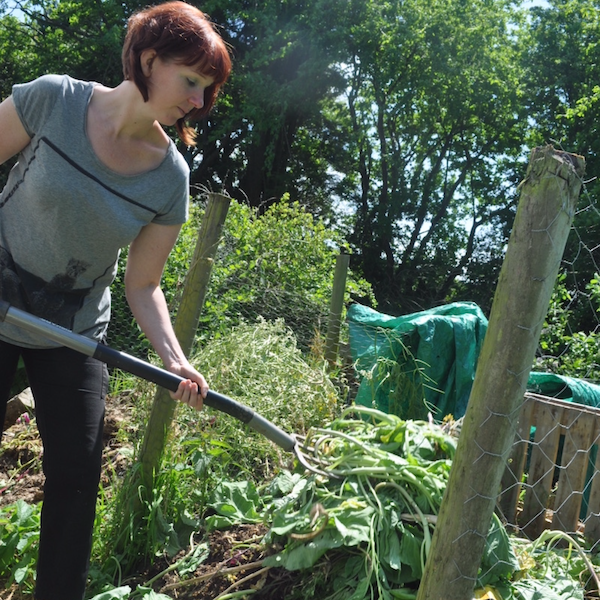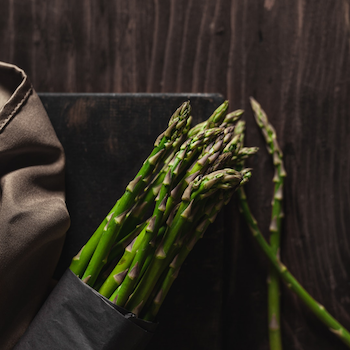Getting to grips with home-grown produce is easy.
No matter where you live, or whether you have a garden or not, there are lots of opportunities to nurture your own home grown fruit and vegetables. There’s never been a better time to start either; with insecurities about the future food chain looming on the Brexit horizon and about the impact of climate change.
So it’s no wonder that gardening is the new hot trend – but where to start?
Journalist and gardener Kim Stoddart shares her expertise...
I would highly recommend taking part in a workshop, course or local group to get you off on the right footing. I run a number of training programmes for this purpose and aim to put the fun back in a spot of grow your own.

My approach is unique and encompasses a more free spirited approach to gardening which is much easier to manage on a day-to-day basis. Less block planting and rigid crop rotation, more mix and match fruit and vegetables with a foraging edge.

Climate change resilience is also at the heart of everything I teach which covers everything from how to reduce the amount of watering required to effective compost making and seed saving.
With this in mind here’s my mini guide to growing hardier crops:

Get composting
It’s very easy. In a basic cold composting system, just add a roughly 50/50 mix of green (fruit and veg waste, cut grass, plant trimmings ) with brown (newspaper, toilet roll, cardboard, garden pruning, fallen leaves). There’s a composting solution for even the smallest space.
Plant more perennials
Their deeper root structure enables them to seek out moisture and thrive in much harsher conditions than many flightier annuals, so they are lower-maintenance and hardier as a result. Easy additions include rhubarb, asparagus, cardoon, daubenton kale, winter herbs and the likes of Jerusalem artichoke and oca, which will grow back if you leave a few tubers in the ground.

Attract beneficial wildlife in
Climate change could result in an increase of pests, and extreme-weather-stressed-plants are more vulnerable to attack. Therefore, having lots of predators at your disposal (let the muncher, also become the munched) provides a more balanced eco-system in which it’s much harder for one type of creature to dominate. These are some of the most beneficial insects.
Grow wild
Letting at least one small area of your garden grow entirely wild will help to encourage in frogs, toads, ground beetles, ladybirds and their ilk. Attractive habitats over winter also include leaf litter, a wood pile, your compost heap, stinging nettles, old plant stems and pots under which to hide.
Get water wise
You've heard of the saying make hay while the sun shines, well now it’s time to also collect water when it rains as much as possible. This means either upsizing or increasing the number of butts currently owned, to be better prepared for the next drought. A water pump can also be used in your butt/s, bath or paddling pool, to help you easily access every available drop.
Conversely, planting trees and shrubs near the top of your garden will help it absorb a greater volume of water during winter, also providing wind protection over time.
Mixed planting
Rather than growing crops in blocks, starting to take a more mix-and-match (cottage garden) approach is also worth considering. It provides greater biodiversity, with lots of different types of plants growing together, rather than mono-cultured blocks (in the case of the veg patch in particular).

It encourages pollinators, makes it easier to create ground cover and provides resilience against pest attack overall. Less ‘carrot fly come this way’, more ‘spot the carrot among all the other crops if you can’.

Want to learn more?
Whether you are a beginner or a seasoned grower, my years of writing for the national press (including the gardening pages of the Guardian) and via my monthly columns for Grow Your Own magazine and The Organic Way (which I edit), enable me to bring lots of resilient, wildlife friendly tactics and effective techniques to the courses I run via my training gardens in beautiful Ceredigion, West Wales.
If Kim’s courses are too far away why not have a browse through all of the gardening workshops on our site>
If you enjoyed reading this you may also like to read: A guide to British bees and how you can help protect them >



